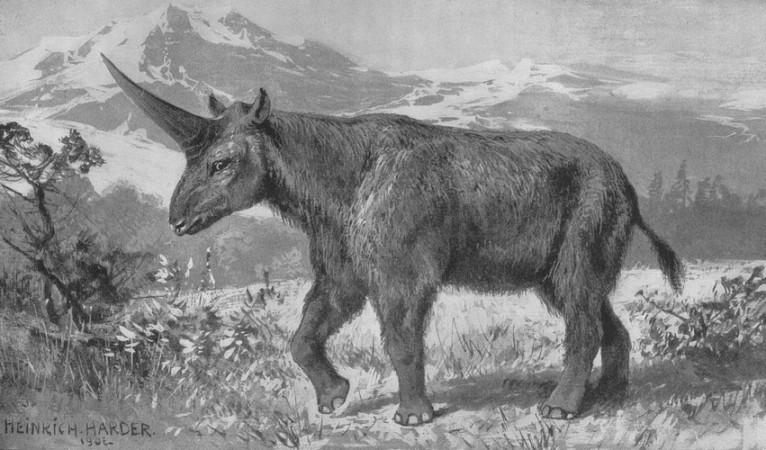
Unicorns are real, or at least were real in prehistoric times. It was long believed that the last of the Siberian Unicorns died out several hundreds of thousands of years back, but a new study puts their period of extinction well within the time ancient humans also roamed the planet—about 29,000 years ago.
The word "Unicorn" is likely to conjure images of friendly mythical white horses with twisted ivory horns, but in reality, unicorns were huge, rhino-like beasts that were almost as big as mammoths. Called the Elasmotherium sibiricum, these animals had more in common with modern-day rhinos than horses and deer and had one massive horn.
Weighing in at about 4 tonnes, they stood at an imposing 2 metres tall and about 4.5 metres long. In spite of its massive size, the animal was most likely a grass-eating grazer, report ScienceAlert. A well-preserved skull was discovered in Kazakhstan in 2016 and scientists working on it have discovered that the animal was likely around when ancient humans walked the Earth.
The skull was remarkably preserved, said researchers dated it to about 29,000 years ago using radio carbon techniques. This skull belonged to an old male unicorn, but the cause of its death was not established. The question of how this one managed to survive after so many years when these animals were thought to have all died out remains a matter of intrigue.
"Most likely, the south of Western Siberia was a refúgium—area where a population could survive through periods of unfavourable conditions—where this rhino persevered the longest in comparison with the rest of its range," said one of the team, Andrey Shpanski.
"There is another possibility that it could migrate and dwell for a while in the more southern areas."
Researchers say that this find could open up a better understanding of what role the environment played in the unicorn's extinction.
The study was published in the American Journal of Applied Science.

















